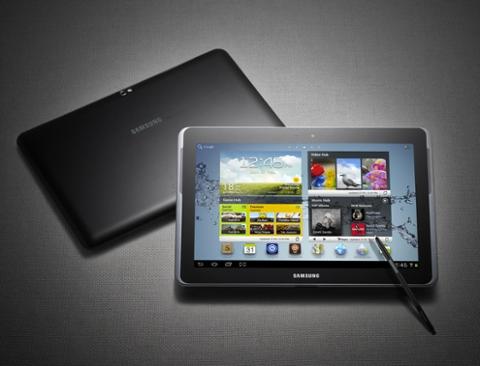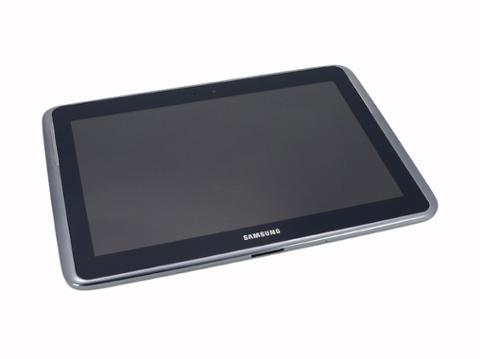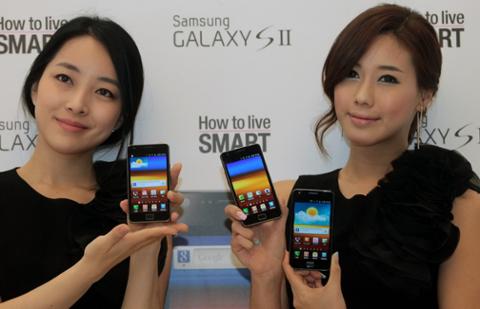How significant is the phablet? If we are to take a report released by app analytics firm Flurry at face value, the answer would be a resounding, “not very.”

They ought to know.
Flurry sources its data from somewhere in the vicinity of a billion devices. And sometimes statistics reveal more than meets the eye. Flurry went as far as to suggest that phablets are so insignificant in terms of user base that they don't justify support.
What's a phablet?
Before we get started, it's necessary to establish where medium-sized phones end and phablets begin. According to Flurry’s parameters, which are more or less universally accepted, anything smaller than 5 inches is a phone, while anything bigger than 5 but smaller than 7 inches is a phablet. From
Flurry:
1. Small phones (e.g., most Blackberries), screens 3.5” or less 2. Medium phones (e.g., iPhone), between 3.5” - 4.9” screens 3. Phablets (e.g., Galaxy Note), 5.0” - 6.9” screens 4. Small tablets (e.g., Kindle Fire), 7.0” - 8.4” screens 5. Full-size tablets (e.g., the iPad), screens 8.5” or greater
For the most part, these definition are reasonable — until you come to
Samsung's Galaxy S4. With its
massive (by medium-sized phone standards) 4.99-inch screen, it's technically a “Medium” phone, even if the definitions only go to one decimal place. It looks more like a large phone than a mini tablet, but then the same could be said of most 5-inch models on the market. Thus far, the 5.5-inch Galaxy Note 2 is the biggest phablet that money can buy, at least in the U.S. But when you get beyond 5 inches, things look dramatically different. There's no mistaking a Galaxy Note or Galaxy Note 2 when you see one. They are big enough to make putting them in a pocket a challenge, and they're good for Web browsing. The balance between convenience and usability is extremely delicate — which is why we have yet to see a model in the 6.0-inch – 6.9-inch range. At the present time, the only phablet models on the market are the Samsung Galaxy Note and Galaxy Note 2, the
HTC Droid DNA, and the LG Intuition. The screen sizes of the latter two are precisely 5 inches, while the Galaxy Note and Galaxy Note 2 have screen sizes of 5.3 and 5.5 inches, respectively.
How insignificant is “insignificant”?
The phablet statistics that Flurry released are fairly dismal. Phablets account for 2 percent of all device models, 3 percent of active users and 3 percent of sessions. Medium phones, in contrast, account for 69 percent of all device models, 72 percent of active users and 76 percent of sessions. Thus far, phablets have not made much of a splash. That phablets have failed to gain traction is not all that surprising — first and foremost, there is the matter of choice. You can count the current-generation high-end phablet models on one hand. While they all meet the technical definition, the only really adventurous models when it comes to screen size are the two from Samsung, which has concentrated its marketing pretty squarely on its flagship “medium-sized” Galaxy models. Lack of choice is further compounded by carrier fragmentation. While the Galaxy Note 2 is available with all major carriers, its predecessor is available only with AT&T. The HTC Droid DNA and LG Intuition are only available with Verizon. If you're not with Verizon, your phablet choices are rather limited. And, of course, there's the lack of involvement of the world’s biggest smartphone manufacturer, Apple. A plus-sized iPhone would certainly have an impact on these figures. Yet another issue with phablets is their age, or lack of it. The first major phablet was the Galaxy Note, which debuted in November 2011. So, they've been around for less than a 18 months — an eternity in the early days of the smartphone wars — but not that long nowadays, where novelty has worn thin and most people have been locked into two-year contracts.
What will it take?
While the cards are stacked against the phablet, it's not beyond the realm of possibility that the market will ultimately prove Flurry wrong. Certainly, the manufacturers haven't given up hope. At present a number of 5.5-inch models are in the pipeline from the likes of Sony, Lenovo and LG, and those will be dwarfed by Samsung’s upcoming 5.9-inch Galaxy Note 3. Chinese manufacturer Huawei has a 6.2-inch model in the works, but whether it makes its way Stateside remains to be seen. For phablets to take off they need to be seen. People have to become used to them and manufacturers have to start differentiating them from medium-sized models. When it comes to browsing, bigger screens offer tremendous advantages, but the larger case size should be capitalized on as well. If nothing else, they have room for bigger batteries; the only real constraint is the size of the average pocket. The Galaxy Note 3 may well prove to be too big, but those waters need to be tested. Getting phablets into more hands is a huge part of the equation. I doubt that they'll ever rival medium-sized phones in terms of user base, but it's possible for manufacturers to carve out a significant niche for the larger form factor. It would take a hugely popular model and no small measure of the unfriendly rivalry that has driven
Apple and Samsung to the top of their games. At present, nothing like this is coming out of the Android community, but that kind of dynamic could develop if Apple became involved.
Back to stats and recommendations
Flurry certainly established that phablets represent a trifling percentage of the devices in use today. Does that justify developers ignoring the larger form factor? As an iPhone 5 user, I often find myself with Galaxy S3 envy. While the iPhone's screen handles light browsing and occasional reading, it's truly dreadful for heavier work. It's too small even for putting the finishing touches on a document or spreadsheet. In contrast, the S3 is just big enough to make such tasks possible. The S4 is bigger still, but half an inch past that and you can do a good deal more, especially with a stylus. This year marks the first time in the history of the Internet that
the majority of Web users will be mobile-only. If this trend continues, then the space for larger-sized devices is likely to grow. For developers, the in-between size presents something of a challenge, but it's worth noting that the Galaxy S4 is closer in size to the Galaxy Note 2 than it is to the iPhone 5. Does it really take that much extra work for a developer to add support for phablet screen dimensions in phone apps, or to rejigger the layout of a tablet app so that it can function on a smaller screen? Developing apps for phablets alone would be a waste of time; maintaining support for different screen sizes and functionalities is not. Adding a mere 0.01 inches to the screen size of the Galaxy would make it a phablet. With that point in mind, either Flurry’s statements are a little premature, or the cut-off point between medium-sized phones and phablets is a little silly. Image: Wikipedia
 They ought to know. Flurry sources its data from somewhere in the vicinity of a billion devices. And sometimes statistics reveal more than meets the eye. Flurry went as far as to suggest that phablets are so insignificant in terms of user base that they don't justify support.
They ought to know. Flurry sources its data from somewhere in the vicinity of a billion devices. And sometimes statistics reveal more than meets the eye. Flurry went as far as to suggest that phablets are so insignificant in terms of user base that they don't justify support.



